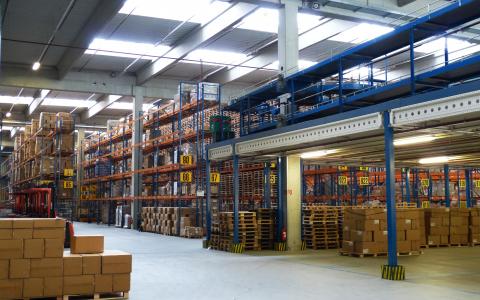
(TheStreet) - The Federal Reserve has raised its federal funds rate target by 150 basis points since March, and speculation now centers on how much further the Fed will go.
Interest-rate futures traders see an 89% probability that the central bank will lift rates by at least another 175 basis points this year.
But Michael Burry, whose character (played by Christian Bale) had a starring role in “The Big Short” Movie, sees things differently. He’s already talking about the Fed reversing field to cut rates.
He thinks the excess inventories at retailers like Walmart WMT, Target TGT and Macy’s (M) - Get Macy's, Inc. Report signal trouble for the economy. “This supply glut at retail is the Bullwhip Effect,” he tweeted.
The tweet links to a CNN story that reports about the bulge in inventories and says that some stores, when giving refunds for returns, are asking customers to keep the merchandise. That way stores can trim their inventories.
What Is the Bullwhip Effect?
The bullwhip effect refers to a small fluctuation at one end of a chain having a larger impact along the path to the end, just like a bullwhip. “Google it. Worth understanding for your investing endeavors,” Burry writes.
“Deflationary pulses from this [inventory surplus] --> disinflation in CPI [consumer price index] later this year --> Fed reverses itself on rates and QT [quantitative tightening] --> Cycles.”
In other words, the excess inventory points to economic weakness that will pull inflation down, Burry is saying. Consumer prices soared 8.6% in the 12 months through May.
And that deflation will push the Fed to cut rates instead of raising them and to stop selling Treasury and mortgage bonds from its balance sheet. That selling constitutes quantitative tightening.
Meanwhile, Harvard economist Larry Summers doesn’t expect the Fed to let up on its rate hikes anytime soon, but he does expect the rate moves to ultimately push the economy into recession.
And then he thinks we will reenter a period of secular stagnation, where growth and interest rates are subpar and financial-market bubbles result.
What is Goldman Sachs View?
Goldman Sachs economists recently increased the probability they see for recession.
“Commodity prices have risen further and pushed up inflation expectations, and shelter inflation jumped in May,” the economists said.
“In response, the Fed has front-loaded rate hikes more aggressively, terminal rate
expectations have risen, and financial conditions have tightened further.”
Those tighter conditions “imply a substantially larger drag on growth—somewhat more than we think is necessary,” the economists said.
The economists peg the chance of a recession over the next two years at 48%, up from 35% previously.
By Dan Weil
June 27, 2022
Dan is a freelance writer whose work has appeared in The Wall Street Journal, Barron's, Institutional Investor, The Washington Post and other publications.



